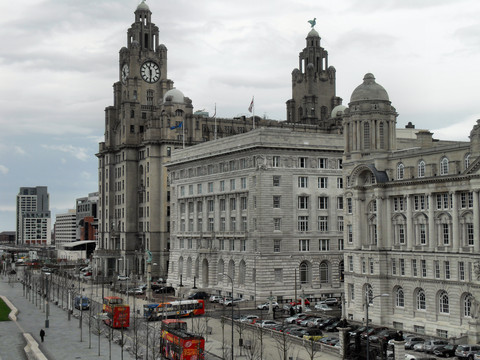
Titanic had strong links with Liverpool because many of her officers, crew, passengers, White Star employees and suppliers had connections with the city. Some would play key roles in the ship's history and bear witness to the tragic events of 15 April 1912 when the ship met her end.
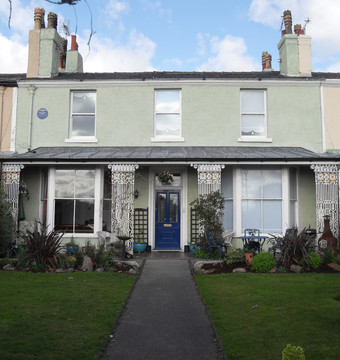
Captain Edward John Smith lived at 17 Marine Crescent, Waterloo, between 1891-1907. It was here in May 1903 that Captain Smith made his will, leaving everything to his wife (so long as she did not remarry). The house (right) is just a short distance away from 13 Beach Lawn, the childhood home of his employer, J Bruce Ismay. Please click here for more information about Captain Smith.
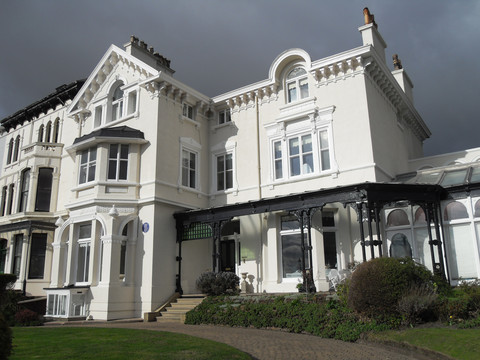
Vilified as a coward for leaving the Titanic in one of the last lifeboats, J. Bruce Ismay was brought up at 13 Beach Lawn between 1865 and 1885. The house (left) is visible from the Irish Sea at the mouth of the River Mersey. As they sailed past White Star liners would salute the Ismay residence.
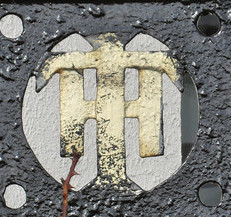
Thomas Henry Ismay had the house built in 1865. His THI monogram (right) can be seen at the entrance to the property. Thomas bought the White Star Line in 1868, transforming it into a successful shipping line. When he died in 1899 his son, J Bruce Ismay, became managing director. In 1902 he sold White Star Line to the International Mercantile Marine.
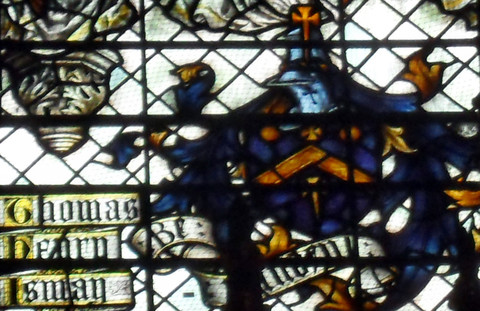
There is a Memorial Window to Thomas Henry Ismay in the Anglican Cathedral in Liverpool. Please click here to see a photo of the Memorial Window to Captain Smith.
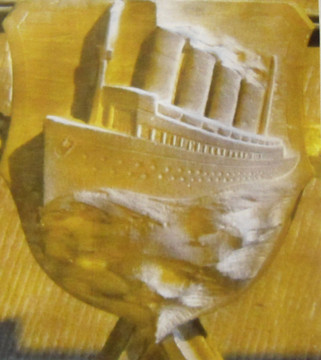
James Townley Dilworth worked on the Anglican Cathedral for several years as a stone and wood carver. James carved the intricate stone image of the Titanic which can be found in the Cathedral's Northern Choir Aisle (right).
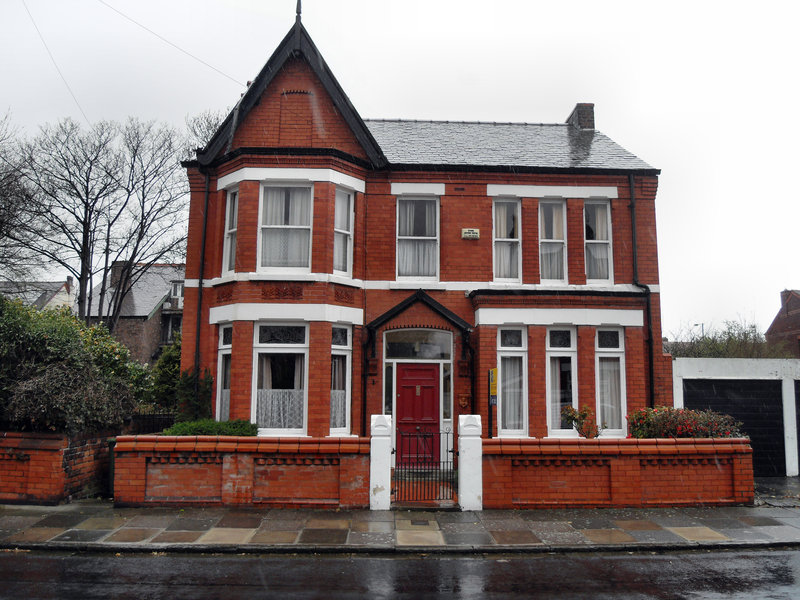
Most of Titanic's crew from the Liverpool area were lost during the sinking, including the Chief Engineer Joseph Bell. Joseph was born in Cumbria in May 1861. At time of the disaster he lived with his wife and family at 1 Belvidere Road, Crosby (left).
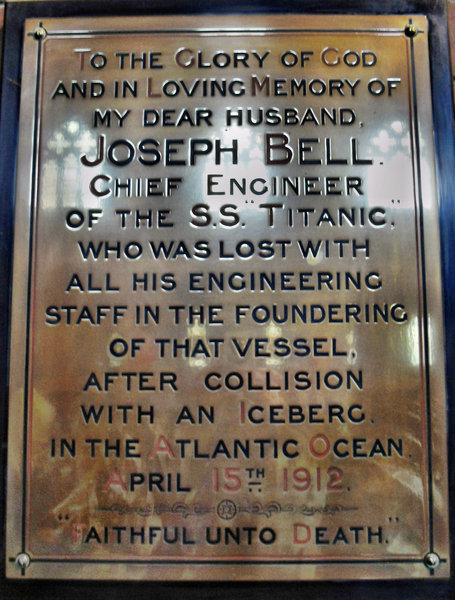
Joseph held the rank of Lieutenant-Commander in the RNR and had been awarded the Royal Decoration. He and others from the engine rooms and stoke-holds, died trying to keep the Titanic afloat and illuminated for as long as possible. There is a plaque (right) dedicated to the memory of Joseph Bell at St Faith's Church, Great Crosby.
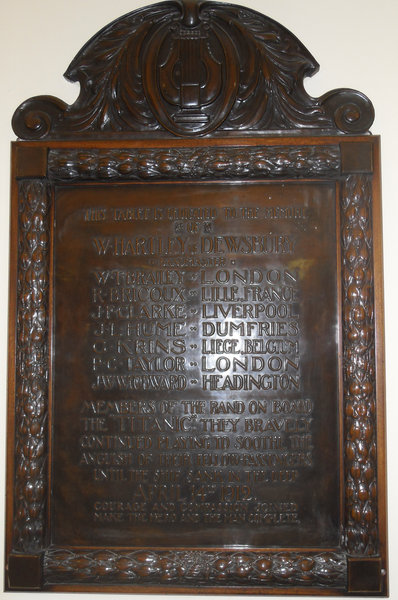
Titanic's musicians were recruited by music agents C.W. and F.N. Black of 14 Castle Street, Liverpool. The eight musicians in Titanic's band continued on playing until she sank. They did this to try and help everyone on board stay as calm as possible, despite the horrors facing them. None of the musicians survived. This act of heroism is one of the most powerful and lasting memories of the disaster. A memorial plaque dedicated to the Titanic bandsmen can be seen at The Philharmonic Hall in Liverpool (left).
Captain Arthur Henry Rostron of the Cunard liner Carpathia, lived at Woodville, Victoria Road, Crosby. He was one of the main heroes of the Titanic disaster and showed great skill and courage in moving his ship so quickly through the vast ice-fields to rescue the survivors.
Titanic - History . com (Titanic History by André Price, Titanic Historian & Maritime Researcher)
